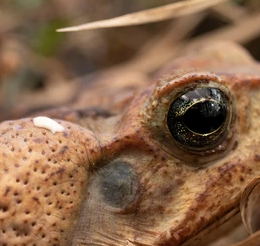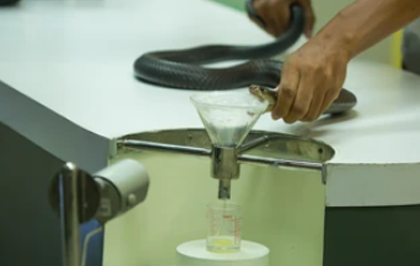Venom Sample Collection and Processing
Venom is a toxic secretion produced by glands with special functions in animals. These glands are often connected to the bone spurs, teeth, tail spurs and other sharp organs of animals. Animal venom is mainly used to kill or anesthetize prey, and some animal venom also has digestive functions.
As a natural resource with great development and application potential, venom has strong biological activity. The composition of the venom is very complex. The venom generally includes proteins, enzymes, small molecule peptides, amino acids, biological amines, and metal ions, some of which can be developed into drugs.
The world's toxic animal resources are very rich. Most animal phylum in nature contain poisonous species, common ones are:
- Certain snakes (such as cobras, mambas, narrow-headed cobras, rattlesnakes)
- Certain fishes (such as perch, pufferfish)
- Several kinds of lizards
- Scorpion
- Several kinds of spiders (such as black widow)
- Certain social insects (such as bees, wasps, certain kinds of ants)
- Marine invertebrates (such as sea anemones, jellyfish, cone snails)

The analysis and characterization of the components in the venom is of great significance for biochemical research and new drug development. Howeve8, only a few species of venom are known. Before analyzing the venom, the first step is to extract the venom from the animal. For larger poisonous animals, there are many practical tools for collecting venom. When the animals or insects are small in size or the amount of venom secreted is small, special techniques need to be used for venom collection.

Generally, the venom contains a large number of proteins and peptides with different physiological activities. The protein secretion in the venom is generally considered to be determined by the venom gene and environmental selection. Therefore, in order to gain a deeper understanding of the biological properties, functions and potential targets of proteins and peptides in venom, it is necessary to combine genome and transcriptome sequences with the proteomic characteristics of venom. This will provide important information for the study of venom production and regulation mechanism.
At present, when conducting various researches using venom, protecting researchers from the deadly toxicity of venom is still a huge challenge. The main obstacles include the cumbersome and dangerous venom collection process and the difficult-to-separate venom gland tissue. Based on an experienced research team and a professional venomics research platform, Creative Proteomics can provide you with services related to venom extraction and processing, including but not limited to:
Creative Proteomics has gradually developed into an integrated company that provides prote4mics, genomics, metabolomics, glycomics, and bioinformatics analysis services to researchers in the pharmaceutical, biotechnology, agriculture and nutrition industries, as well as academic and government organizations.
Please contact us for more information.
For research use only. Not intended for any clinical use.




